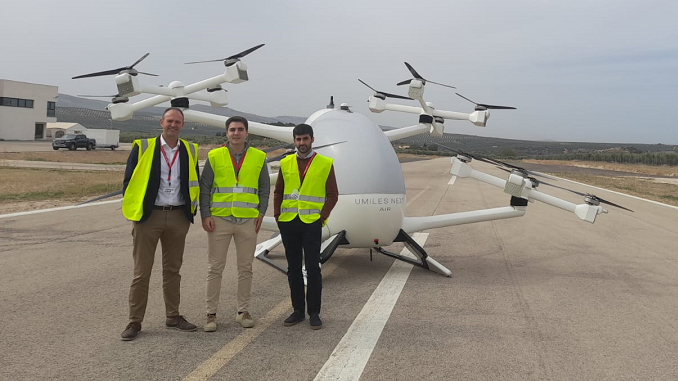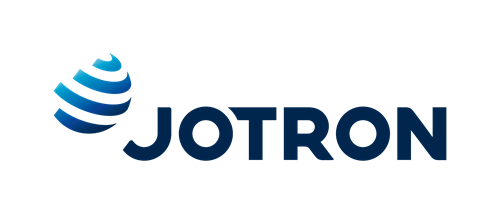ENAIRE tests urban air mobility with air taxis, drones and conventional aviation

ENAIRE continues to test the European U-Space system, which will regulate how drones are integrated into conventional air traffic. U-space is the set of services and procedures that are being developed in a coordinated manner to enable a high number of operations with unmanned aircraft, especially complex operations, in a way that is orderly, fluid, safe and attainable.
Today and tomorrow, ENAIRE is taking part in the validation of the Uspace4UAM project, which has demonstrations in four countries, with the ATLAS Centre in Villacarrillo, Jaén, hosting the one in Spain.
These demonstrations involve both drones and urban air mobility (UAM) vehicles. They cover different use cases, including mixed operations, so the project can collect results that are applicable across Europe. The goal is to increase social acceptance by users to allow U-Space and the autonomy of
these aircraft to develop sufficiently to show that their onboard systems are suitable for U-Space services and provide the required safety levels.
At the ATLAS Centre in Villacarrillo, ENAIRE and the other Uspace4UAM members hope to demonstrate the benefits of using a U-Space platform and its associated services to manage a large number of remotely piloted aircraft (UAS) and air taxi operations.
Automated manoeuvres
ENAIRE is studying how the benefits of the U-Space system in controlled airspace will allow processes that are now manual to be automated, and response times to be improved. Similarly, the desired safe integration of drones and manned traffic will be subject to coordination between air navigation service providers.
Uspace4UAM has a budget of 4 million euros from Horizon 2020 European research funds, within the SESAR Joint Undertaking public-private partnership, and is led by Honeywell.
Uspace4UAM studies operational concepts, regulations and standards for the safe and orderly integration of UAM into daily air traffic. It is doing so with a forward-looking consortium of cities and air navigation providers, such as Austro Control, Air Navigation Services of the Czech Republic, and ENAIRE, national regulators and the European Aviation Safety Agency (EASA), a manager of unmanned air traffic, as well as manufacturers of eVTOL (electric vertical take-off and landing aircraft), research centres and technology providers such as CRIDA, ENAIRE's R&D subsidiary, the Polytechnic University of Madrid, and Ineco, which is responsible for collecting the data.
Scenarios tested in Jaén:
Case 1: creation of a geo-fence
A helicopter needs to land in a U-Space area within a controlled airspace. ENAIRE's air control creates a geo-fence that virtually restricts the landing area to keep drones out of that airspace. The geo-fence is shown to interfere with the route of an air taxi, which deviates around it. Once the helicopter is on the ground, the geo-fence is deactivated.
Case 2: conflict in controlled airspace
The system on board the air taxi detects a conflict with an intruding drone in controlled airspace and must perform an evasive manoeuvre that will force it to exit the defined flight corridor. ENAIRE air traffic controllers coordinate with nearby (simulated) aircraft and the air taxi returns to its approved route once the conflict clears.
Case 3: route change due to unavailability of destination vertiport
The air taxi sees that the destination vertiport is not available and must change its flight path to a secondary vertiport. To do this, ENAIRE's air control service creates a dynamic corridor that protects the operation to the new destination and coordinates with nearby manned aircraft. All of it simulated.
U-Space projects and news
Last June, the Ministry of Transport, Mobility and Urban Agenda (Mitma) published the U-Space National Deployment Plan in Spain (PANDU), available on the Mitma website, the challenge of which is to coordinate the deployment of this system between public bodies with different functions and responsibilities.
As part of the Plan, ENAIRE aims to be certified as the sole common information services provider (CISP) to disseminate static and dynamic data that will allow U-space services to be provided.
ENAIRE recently participated in the demonstrations in Santiago de Compostela and the Rozas aerodrome in Lugo of the AMU-LED project, financed by the European Horizon 2020 programme and led by NTT Data, which relied on the GammaSim control simulation tool and air traffic
controllers at the Santiago Airport to test the integration of an emergency helicopter and five drone operators in controlled airspace in various scenarios.
In November, it will be the turn of U-ELCOME, led by EUROCONTROL, with a budget of 14 million euros and an execution timeline through October 2025, where ENAIRE will act as the national coordinator, with eight locations in Spain, five in Italy and four in France.



.png)


.jpg)


Comments
There are no comments yet for this item
Join the discussion